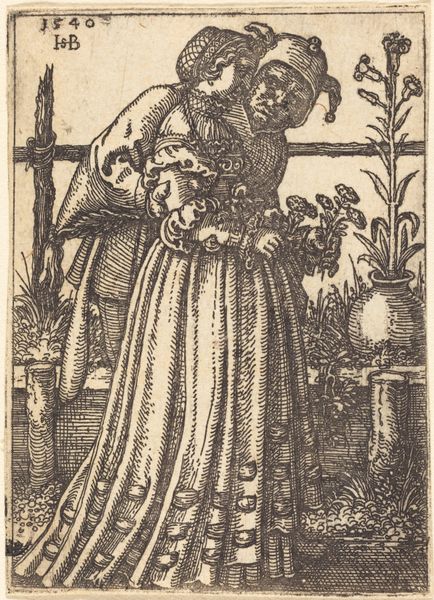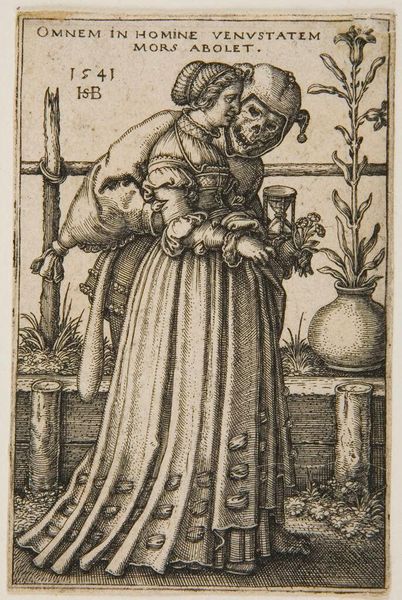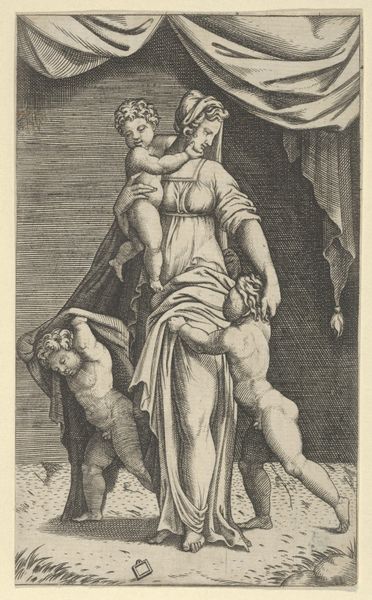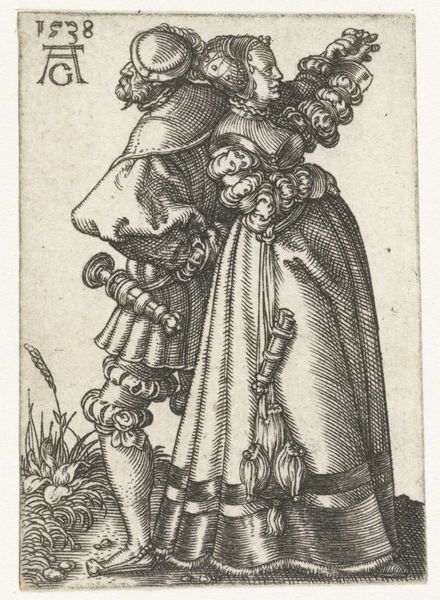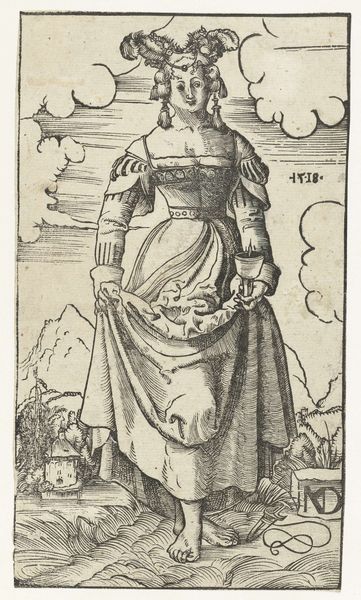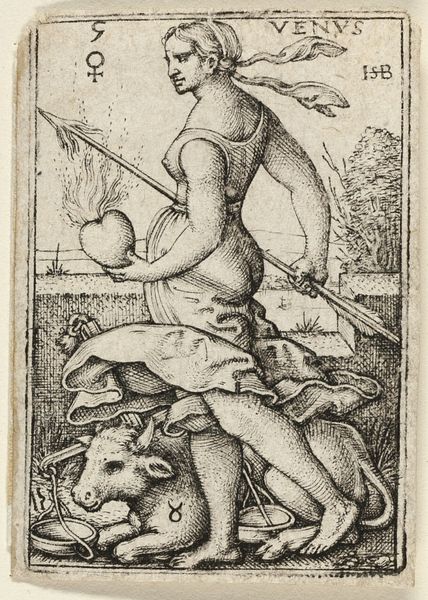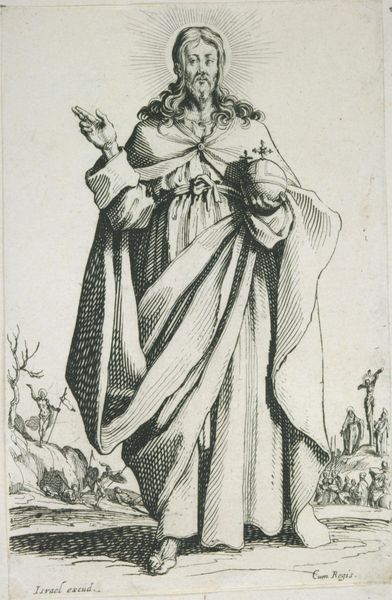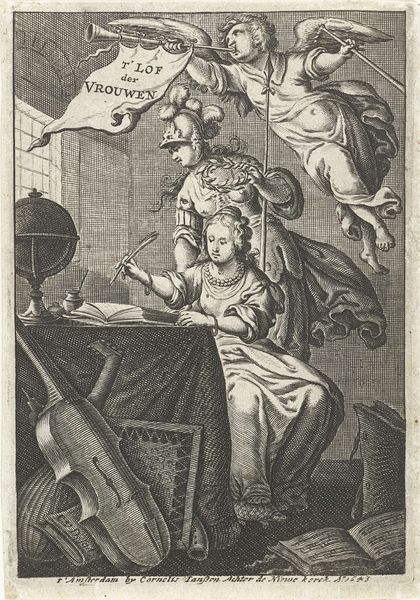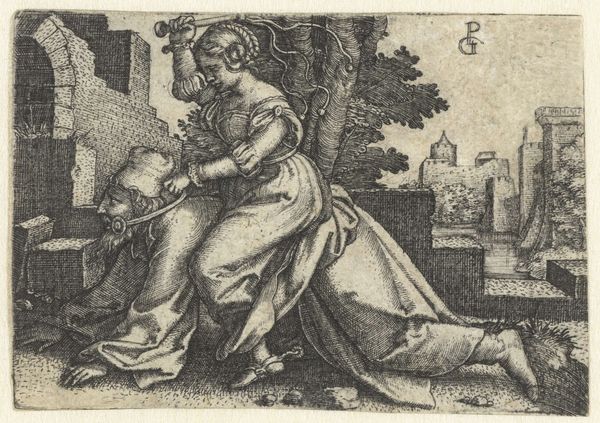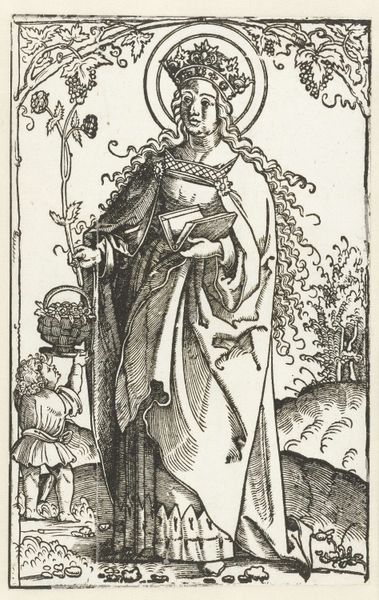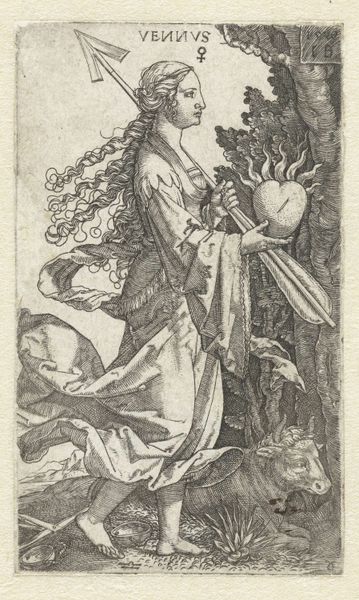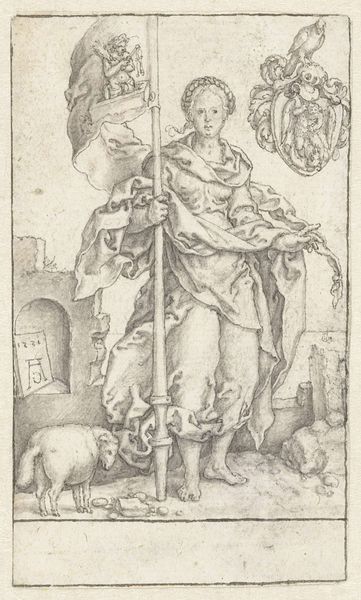
print, engraving
#
allegory
# print
#
old engraving style
#
mannerism
#
figuration
#
momento-mori
#
line
#
northern-renaissance
#
engraving
Dimensions: height 78 mm, width 51 mm
Copyright: Rijks Museum: Open Domain
Sebald Beham made this tiny woodcut, Vrouw en de Dood, or Woman and Death, in 1541. It captures a moment of quiet intimacy between a woman and a grinning skeleton. But what does it tell us about the culture that produced it? In sixteenth-century Germany, the ever-present threat of disease and famine made death a common subject in art. Here, we see the Dance of Death motif, which served as a reminder that death comes for everyone, regardless of status. The image incorporates the "memento mori" tradition, with the hourglass and candle symbolizing the fleeting nature of time. But notice the erotic charge of the woman embracing death. Is this a critique of the church and the art establishment? Perhaps. As historians, we can research the religious and social contexts of the time, read contemporary texts, and analyze Beham's other works to better understand the visual codes and cultural references he was using. Only then can we fully appreciate the meaning of this powerful image.
Comments
No comments
Be the first to comment and join the conversation on the ultimate creative platform.

